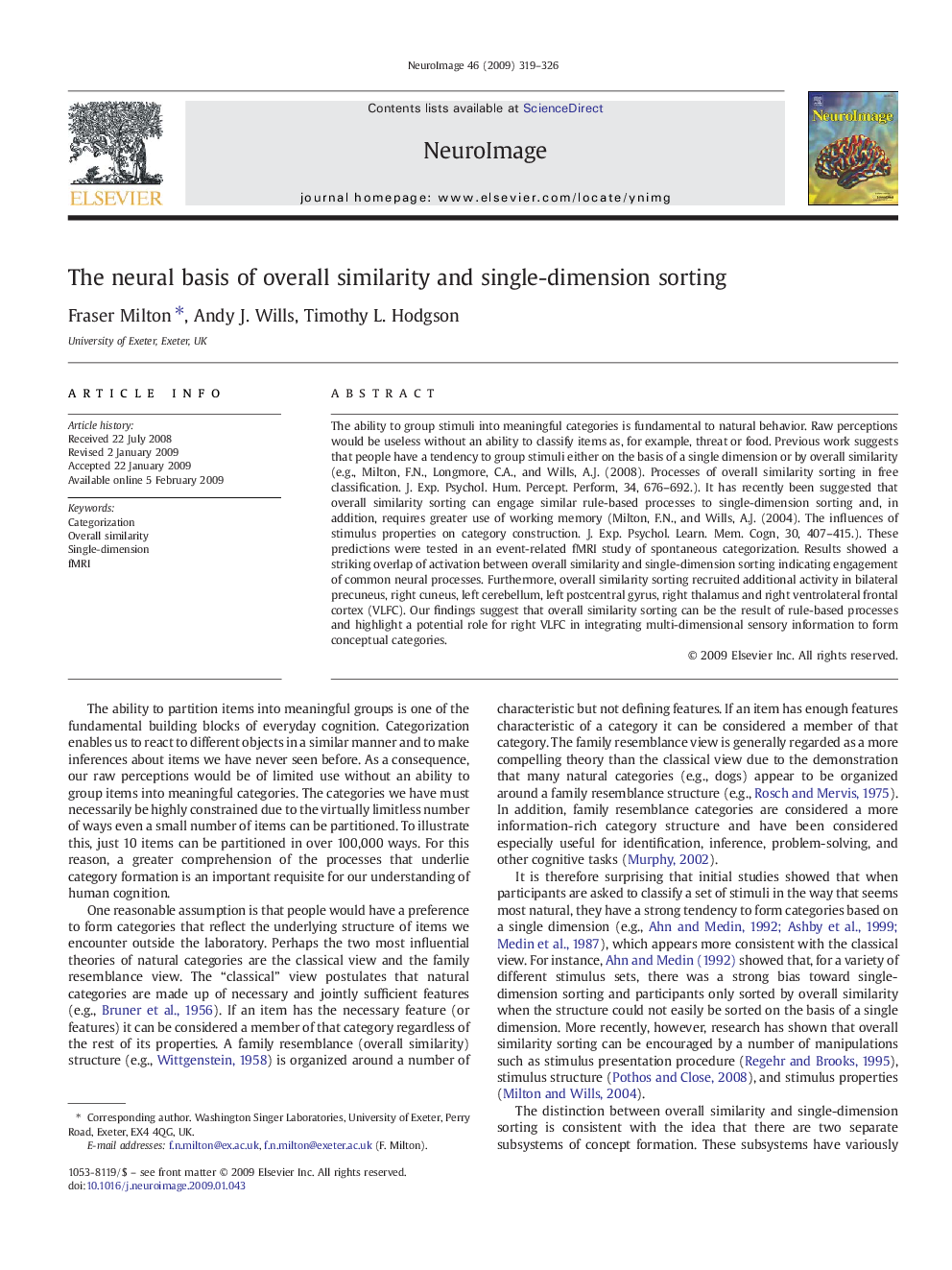| Article ID | Journal | Published Year | Pages | File Type |
|---|---|---|---|---|
| 3072745 | NeuroImage | 2009 | 8 Pages |
The ability to group stimuli into meaningful categories is fundamental to natural behavior. Raw perceptions would be useless without an ability to classify items as, for example, threat or food. Previous work suggests that people have a tendency to group stimuli either on the basis of a single dimension or by overall similarity (e.g., Milton, F.N., Longmore, C.A., and Wills, A.J. (2008). Processes of overall similarity sorting in free classification. J. Exp. Psychol. Hum. Percept. Perform, 34, 676–692.). It has recently been suggested that overall similarity sorting can engage similar rule-based processes to single-dimension sorting and, in addition, requires greater use of working memory (Milton, F.N., and Wills, A.J. (2004). The influences of stimulus properties on category construction. J. Exp. Psychol. Learn. Mem. Cogn, 30, 407–415.). These predictions were tested in an event-related fMRI study of spontaneous categorization. Results showed a striking overlap of activation between overall similarity and single-dimension sorting indicating engagement of common neural processes. Furthermore, overall similarity sorting recruited additional activity in bilateral precuneus, right cuneus, left cerebellum, left postcentral gyrus, right thalamus and right ventrolateral frontal cortex (VLFC). Our findings suggest that overall similarity sorting can be the result of rule-based processes and highlight a potential role for right VLFC in integrating multi-dimensional sensory information to form conceptual categories.
